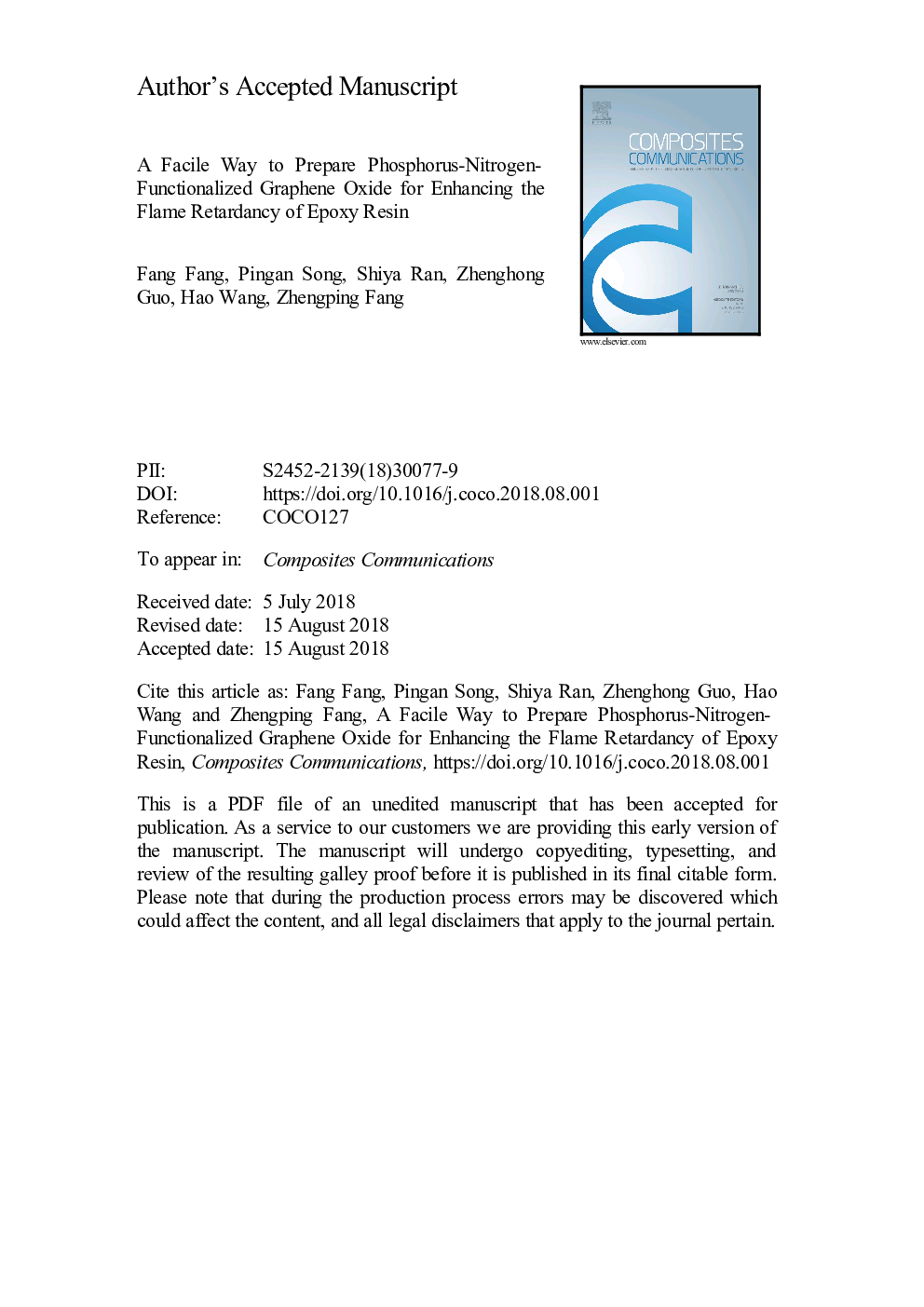| Article ID | Journal | Published Year | Pages | File Type |
|---|---|---|---|---|
| 11006686 | Composites Communications | 2018 | 12 Pages |
Abstract
In this paper, we have reported a facile way to functionalize graphene oxide (GO) via assembling a supermolecular aggregate of piperazine (PiP) and phytic acid (PA) onto the GO surface (PPGO) without using any organic solvent. The functionalization of GO is confirmed by the X-ray photoelectron spectrum (XPS), transmission electron micrographs (TEM) and Raman spectrum. The introduction of 3â¯wt% PPGO into epoxy resin (EP/PPGO3) results in notable suppression on the fire risk of epoxy resin. In addition, cone calorimeter tests showed that the peak heat release rate (pHRR) was decreased from 727.4â¯kW/m2 to 367.5â¯kW/m2 (49%), and the peak smoke production rate (pSPR) was decreased from 0.2316â¯m2/s to 0.1379â¯g/s (40%). The improved flame-retardant performance of EP nanocomposites is most likely due to a tripartite cooperative effect from the key components (piperizine, phytic acid, and GO). This strategy demonstrates a facile and efficient approach for fabricating highly effective graphene-based flame retardants for polymers.
Keywords
Related Topics
Physical Sciences and Engineering
Materials Science
Biomaterials
Authors
Fang Fang, Pingan Song, Shiya Ran, Zhenghong Guo, Hao Wang, Zhengping Fang,
